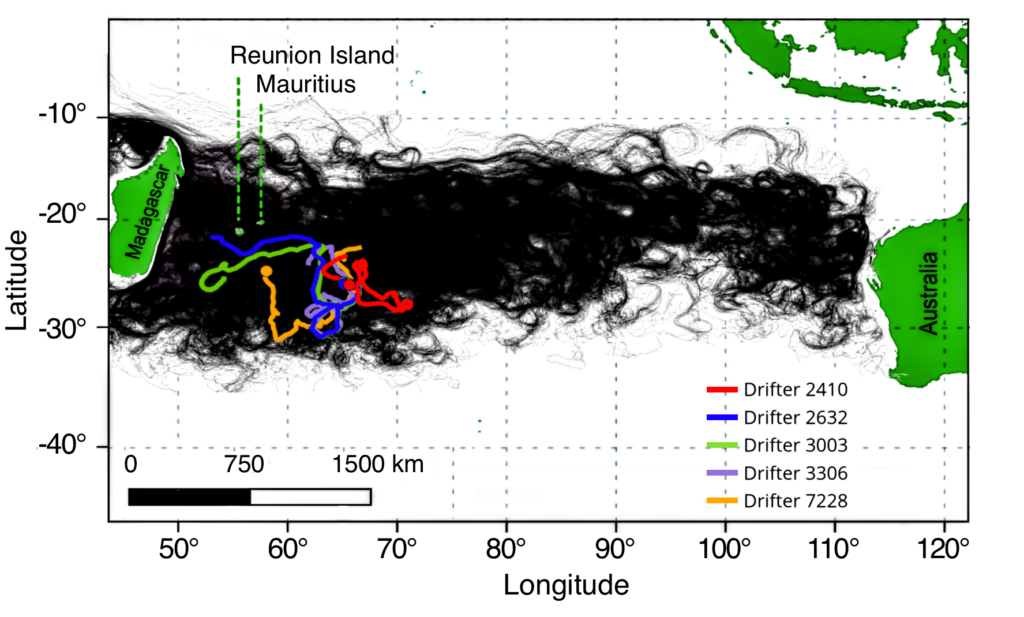Editors’ Highlights are summaries of recent papers by AGU’s journal editors.
Source: AGU Advances
The use of stable isotopes in forensic investigations has exploded in the past two decades. These studies rely on geographic variations in isotopic sources and/or environmental effects on fractionation to be recorded in growing tissues, such as shells.
Al-Qattan et al. [2023] report a new forensic approach using Δ18O recorded in a stalked barnacle attached to the flaperon (part of the wing) from Malaysian Air flight MH370 that washed up on Réunion Island roughly 16 months after the airplane disappeared in 2014. The authors performed careful laboratory calibration to determine how this barnacle species shell records temperature, and used available Δ18O data with a growth model to reconstruct a temperature-time history. The resulting record was compared with 50,000 temperature-time histories generated by following ‘drifters’ added to ocean reconstructions at the time and temperature range estimated for the barnacle’s attachment. Comparing records allowed the authors to select the most probable drift path for the last roughly 5 months of the flaperon’s journey. Narrowing the location where the flaperon entered the ocean would require analysis of older barnacles. This overall approach can be applied to a wide range of drifting ocean debris.

Citation: Al-Qattan, N., Herbert, G. S., Spero, H. J., McCarthy, S., McGeady, R., Tao, R., & Power, A.-M. (2023). A stable isotope sclerochronology-based forensic method for reconstructing debris drift paths with application to the MH370 crash. AGU Advances, 4, e2023AV000915. https://doi.org/10.1029/2023AV000915
—Susan Trumbore, Editor in Chief, AGU Advances

